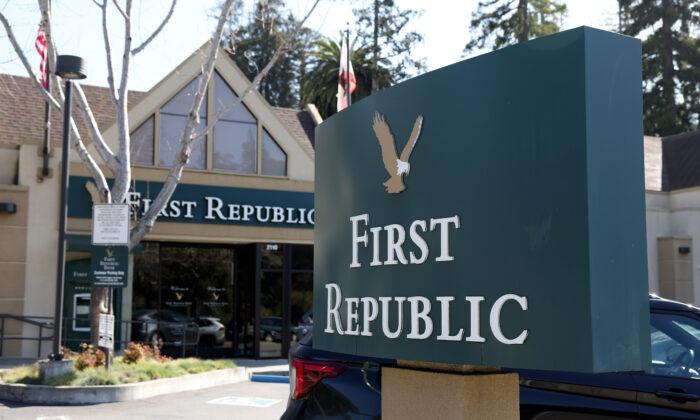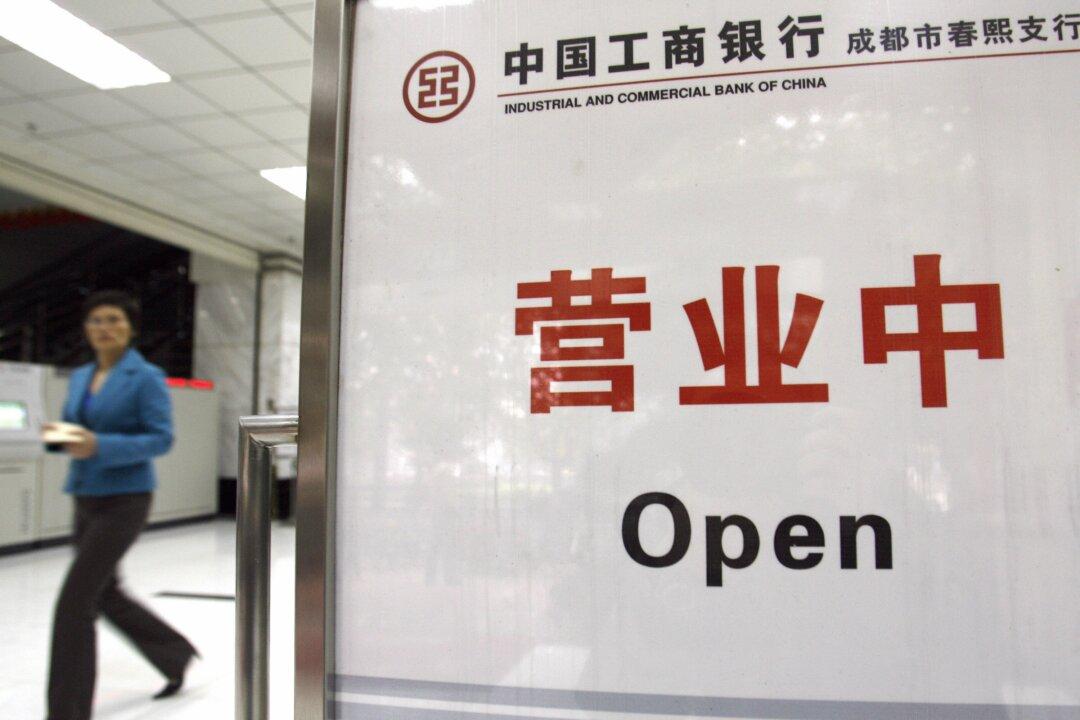For the past six weeks, the market rally has lifted most sectors out of some very bearish downtrends, the financials being one of them. While there is a base case for wanting to own bank stocks—such as a more constructive outlook for the economy, and lower interest rates—there are some major hurdles facing the regional banks that must be cleared out before this sector can be on long-term sound footing.
- Regional banks have seen hundreds of billions of dollars in customer deposits flow out of their accounts and into money markets at major brokerage firms, seeking higher yields.
- Regional banks bought hundreds of billions of dollars in low-yielding long-dated Treasurys when the Federal Reserve flooded the system with liquidity during the COVID-19 outbreak, resulting in massive unrealized losses on their balance sheets.
- Regional banks still have over $1.5 trillion in commercial real estate loans on the books that are all due to be refinanced between 2024 and 2027.
- Regional banks are currently coping with increased regulatory standards and more stringent lending criteria to businesses and individuals following the banking crisis in spring 2023, when the Fed and Federal Deposit Insurance Corp. (FDIC) had to intervene with a bailout of $500 billion-plus, guaranteeing all deposits.
- Regional banks are now facing a highly inverted yield curve, which impacts net interest margin—a measurement comparing the net interest income a financial firm generates from credit products like loans and mortgages, with the outgoing interest it pays holders of savings accounts and certificates of deposits. The discount rate (which banks pay the Fed to borrow money) is currently at 5.5 percent. With lending rates coming down along the yield curve, profits are squeezed.
- Nov. 3, 2023: Citizens Bank, Sac City, Iowa, approximate assets of $66 million
- July 28, 2023: Heartland Tri-State Bank, Elkhart, Kansas, approx. assets of $139 million
- May 1, 2023: First Republic Bank, San Francisco, California, approx. assets of $229.1 billion
- March 12, 2023: Signature Bank, New York, New York, approx. assets of $110.4 billion
- March 10, 2023: Silicon Valley Bank, Santa Clara, California, approx. assets of $209 billion
The SPDR Regional Banking ETF (exchange-traded fund) reflects very similar data, showing key technical resistance just overhead, where its 200-week moving average lies, even though the issues hampering the regional banks haven’t improved, other than the perception that conditions will improve in 2024.
It’s hard to argue with the Fed’s recent pivot, which fueled massive short-covering and the notion that consumer and business lending will experience more favorable borrowing terms, but I think the 800-pound gorilla in the room is the commercial real estate refinancing dilemma facing regional banks.
Scores of commercial properties have seen valuations fall by as much as 50 percent in major cities, amid sky-high vacancy rates. America’s office market is still in a major correction, and office buildings may have another 20 percent to fall, according to research firm Capital Economics. “Persistent weak growth and elevated (albeit soon-to-be-falling) interest rates continue to spell trouble for real estate values,” the firm said on Friday. “Offices still face a substantial value adjustment, with another 20% fall to come in our view.”
Business Insider stated “America’s office market will plunge another 20 percent in value next year and will take decades to climb back to its peak,” and added, “property owners who are able to refinance their mortgages are having to do so at much higher interest rates. That could bring a wave of distressed debt, some economists warn, as there’s around $1.5 trillion of commercial real estate debt maturing over the next few years.”
Based on how the market has seemingly turned a blind eye to these risks, one could argue that the recent spike in the regional bank sector is a prime set up for a shorting opportunity following a torrid rally in the major averages. I’m not saying to fight the tape or the Fed, but there are some deep-set problems within the regional banks that will likely dampen top- and bottom-line growth going forward. And when the profit-taking shows up—and it will, at some time—there could be fat profits made from downside bets.
Check out the book or movie “The Big Short” for a dramatic rendering about how such bets can pay off.







